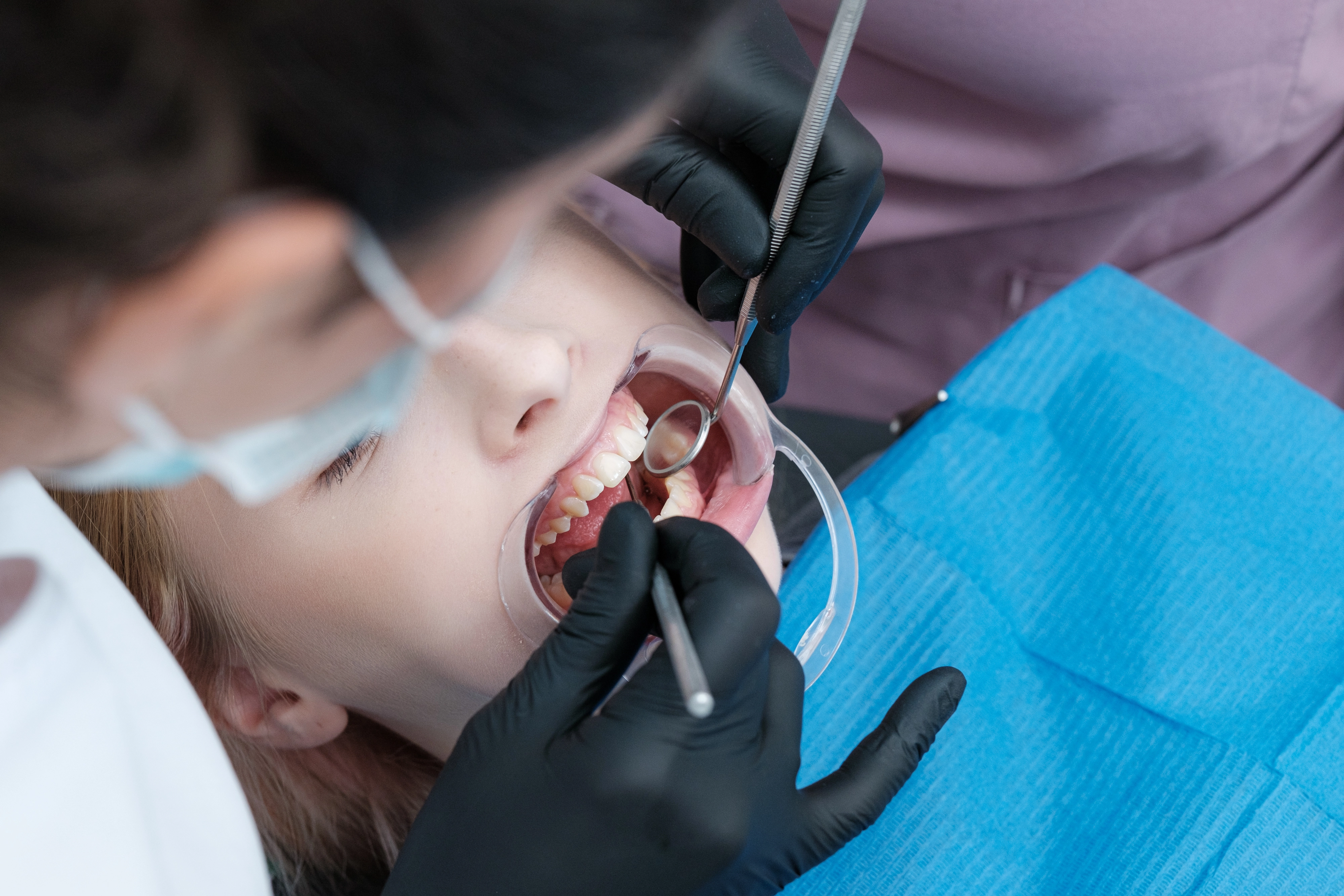Healthy teeth aren’t a matter of luck. They are the result of proper hygiene and consistent daily habits. At Saraj Dent, we often see patients with very similar problems — and almost all of them start with simple, everyday mistakes.
The good news is that most of these issues can be corrected with small changes that make a big difference. This article breaks down the most common mistakes patients make and explains how to fix them in a clear, practical, and immediately applicable way.
1. Brushing for Too Short a Time
Many patients brush their teeth for much less time than needed to effectively remove plaque. A typical brushing routine lasts only 30 to 45 seconds, which isn’t enough to remove the soft plaque that forms on teeth throughout the day.
To thoroughly clean the teeth, brushing should last at least three minutes. The simplest way to achieve this is by using a timer on your phone. Once this habit becomes routine, plaque levels decrease significantly, and with that, the risk of cavities and gum inflammation drops as well.
2. Incorrect Brushing Technique
One of the most common oral hygiene mistakes is using the wrong brushing technique. Brushing aggressively with horizontal scrubbing motions does not clean the teeth better — in fact, it can damage the gingiva and gradually cause gum recession. This technique also leaves plaque along the gumline, right where the protective gingival margin ends and inflammation develops most easily.
Proper brushing involves gentle, circular motions while keeping the toothbrush at a 45-degree angle toward the gingiva. It’s important not to rush and to cover all surfaces of each tooth. When brushing is done correctly, the gingiva stays healthy and plaque is removed far more effectively than with any hard-bristle toothbrush.
3. Neglecting Interdental Cleaning
A toothbrush can only clean the outer surfaces of the teeth. The spaces between the teeth remain untouched, and these tight areas are where cavities most commonly begin. Food particles and bacteria remain trapped there much longer than on open surfaces.
If plaque stays between the teeth, it quickly triggers inflammation, leading to early gingivitis — redness, tenderness, and bleeding of the gingiva. This is why flossing or using small interdental brushes must be a standard part of oral hygiene, not an optional step. It takes only about thirty seconds in the evening, and this simple habit significantly reduces the risk of cavities, gingival inflammation, and long-term periodontal issues.
4. Infrequent Dental Checkups
Many patients seek help only when they feel pain — but pain usually signals that the problem has already progressed. By the time symptoms appear, decay often involves deeper tooth structures or gingival inflammation has advanced.
Routine checkups every six months allow us to detect changes while they are still small and easy to treat, preventing complications and more invasive procedures.
At Saraj Dent, checkups are quick, painless, and give a clear overview of the condition of the teeth, gingiva, and early signs of inflammation. Regular visits remain the most reliable and cost-effective form of prevention.
5. Skipping Professional Cleaning
Plaque that isn’t removed in time begins mineralizing after just two days and turns into tartar. Once hardened, it can no longer be removed with a regular toothbrush. Tartar builds up along the gumline, irritating the gingiva, causing redness, bleeding, bad breath, and accelerating the development of periodontitis.
Professional cleaning is therefore not a cosmetic treatment — it is a key part of preventive dentistry.
Ultrasonic scaling, air-polishing, and final polishing restore the natural smoothness of the tooth surface that home brushing cannot achieve. Smooth surfaces retain far fewer bacteria, keeping the gingiva healthier and less prone to inflammation.
For most patients, professional cleaning is recommended once or twice a year, depending on individual risk.
6. Using the Wrong Toothbrush
Hard-bristle toothbrushes may seem more effective, but they often cause more harm than good. Hard bristles can wear down enamel and irritate the gingiva, eventually leading to gum recession and sensitivity.
A soft-bristle toothbrush provides effective cleaning while being much gentler on tooth and gum tissues, making it safer for daily use.
It’s also important to replace the toothbrush regularly. Once the bristles bend or fray, they can no longer reach critical areas, allowing plaque to accumulate. A toothbrush should be replaced every two to three months, or sooner if signs of wear appear.
7. Missing Hard-to-Reach Areas
The biggest challenge in daily oral hygiene is cleaning areas that a toothbrush hardly reaches. The back molars, the inner surfaces of the lower front teeth, and the narrow edges along the gingiva are the most commonly missed spots, even when brushing is regular.
These areas accumulate plaque faster because the surfaces are uneven and access is limited. When plaque stays undisturbed, it quickly hardens into tartar and creates ideal conditions for early cavities and gingival inflammation.
Brushing requires extra attention in these critical zones — slowing down, adjusting the angle of the toothbrush, and spending a few additional seconds on difficult surfaces can drastically improve cleaning results and prevent plaque buildup.
8. Frequent Intake of Sugary and Acidic Drinks
Sugary and acidic foods and beverages disturb the natural pH of the mouth and create an acidic environment in which cavities develop much faster. Sodas, fruit juices, and energy drinks temporarily soften the enamel, making it more vulnerable.
If teeth are brushed immediately afterward, the softened enamel can be further damaged by mechanical abrasion.
It’s safer to wait 20–30 minutes before brushing to allow the pH to stabilize and the enamel to reharden. Rinsing with water after acidic drinks helps neutralize acids and reduces the risk of enamel erosion.
9. Not Cleaning the Tongue
The tongue is the largest soft surface in the mouth and holds the highest amount of bacterial film. If it isn’t cleaned regularly, bacteria easily transfer back onto the teeth and gingiva, reducing the effectiveness of daily brushing and contributing to bad breath.
Cleaning the tongue is a quick and easy step — it takes only a few seconds with a tongue scraper or the textured back of a toothbrush. Regular tongue cleaning significantly improves breath freshness and supports thorough oral hygiene.
10. Brushing Immediately After Eating
After consuming acidic foods or drinks, the enamel becomes temporarily softer and less resistant. Brushing too soon can damage this weakened enamel.
It’s best to wait 20–30 minutes so the oral pH can return to normal and the enamel can remineralize. If you need to freshen your mouth immediately, rinse with water or chew sugar-free gum to stimulate saliva, which naturally neutralizes acids.
How Saraj Dent Supports Preventive Care
At Saraj Dent, we offer all essential preventive treatments, including:
- professional tartar removal
- air-polishing and polishing
- detailed examination of teeth and gums
- personalized oral hygiene guidance
- prevention plans tailored to each patient
Prevention saves time, reduces future treatment needs, and protects your smile.

